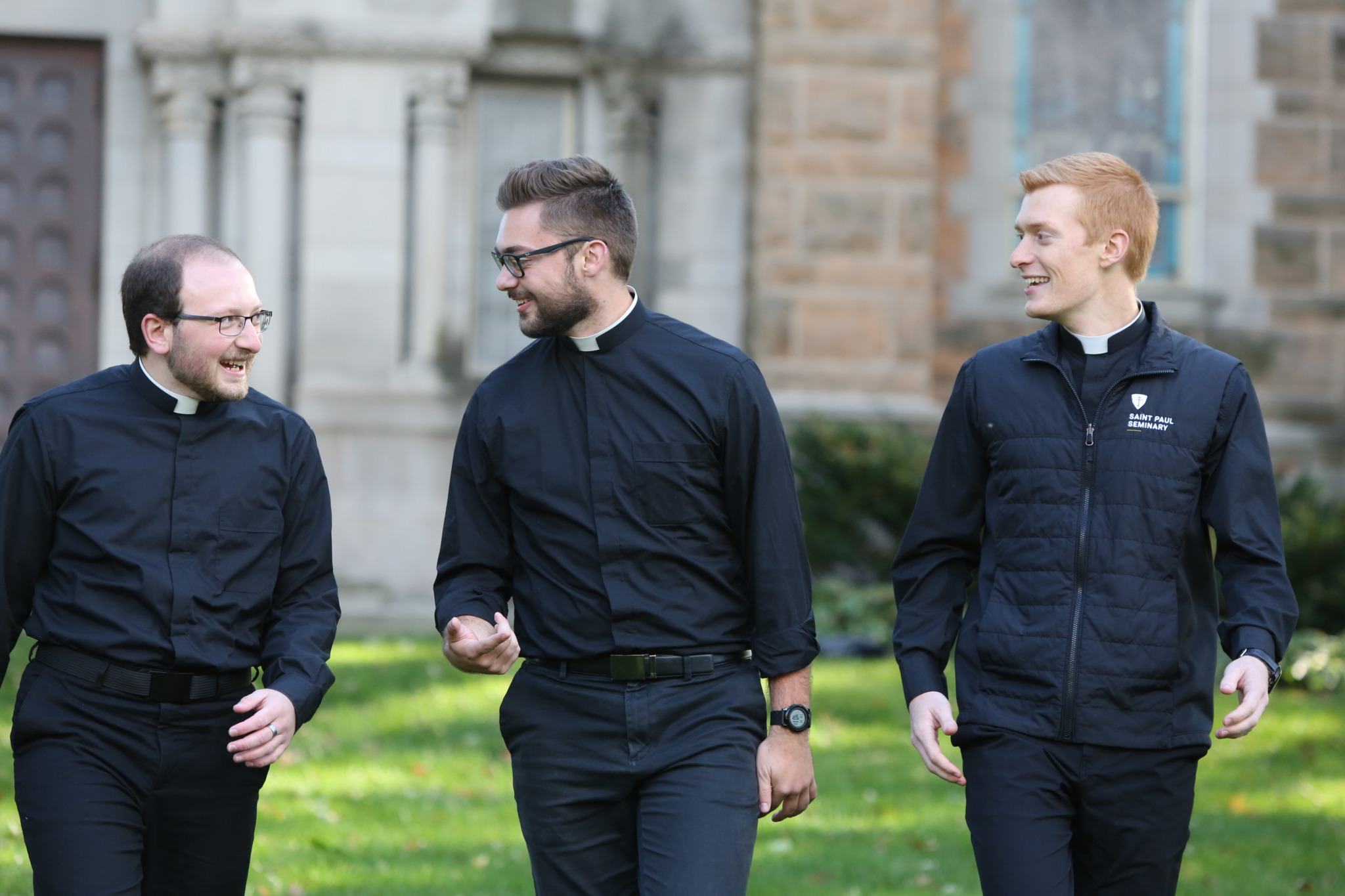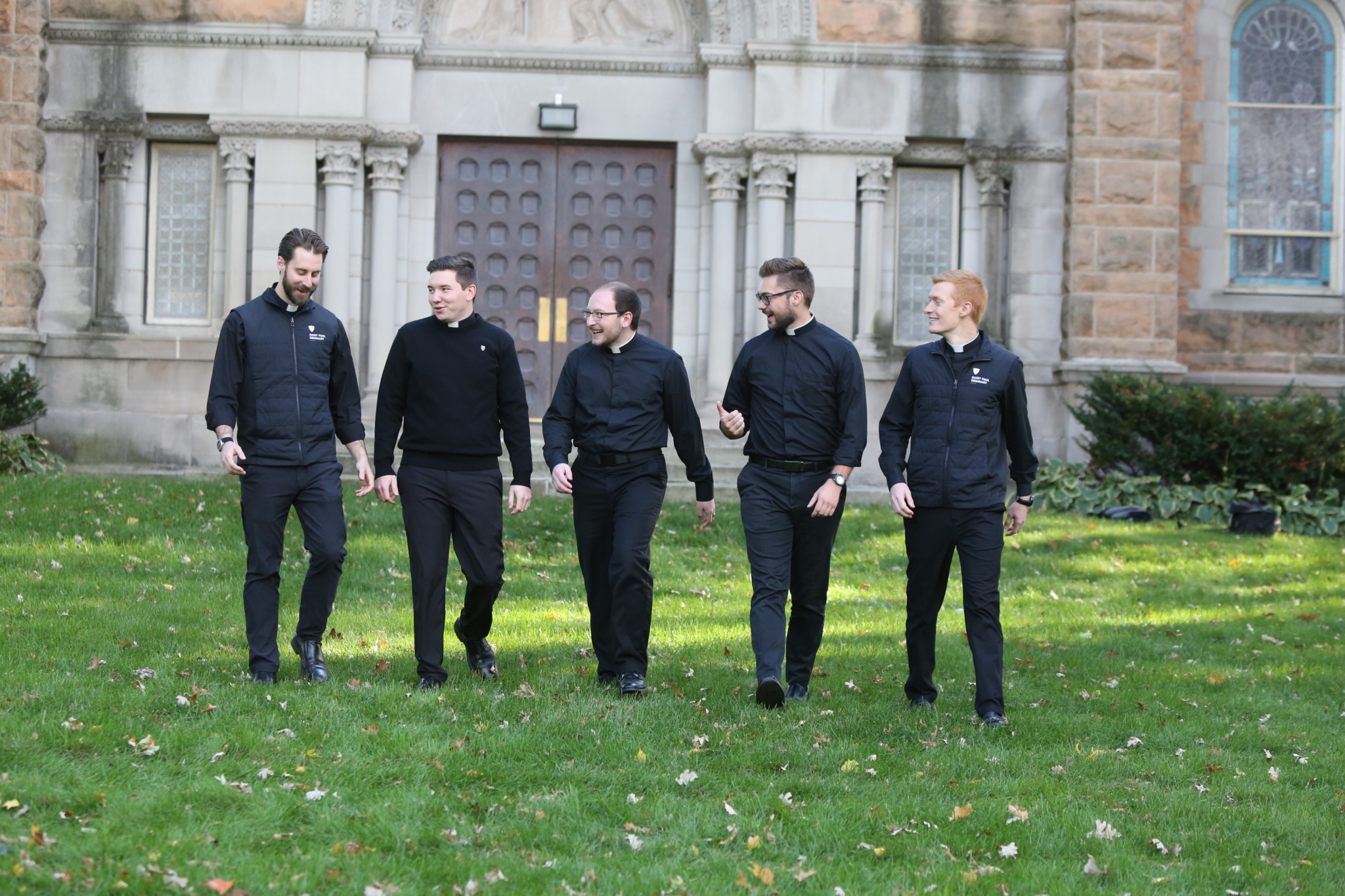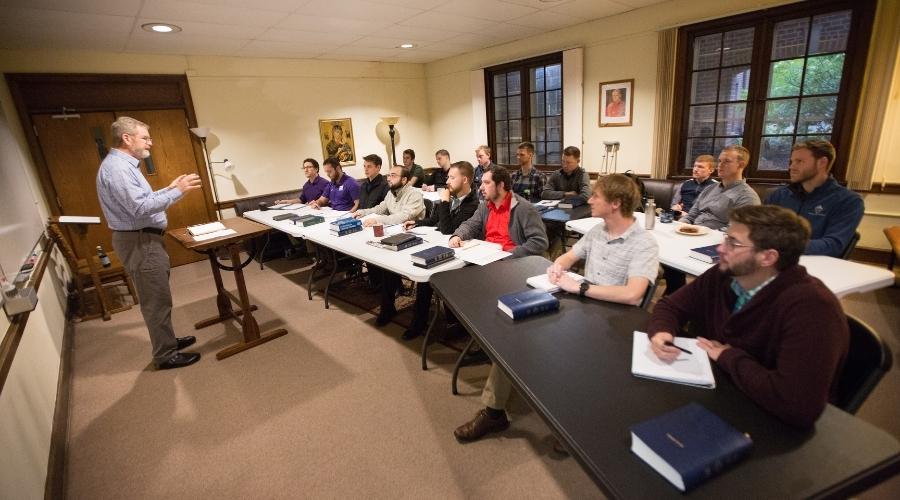
Fr. Jason Kern spent the better part of a recent Thursday walking the grounds of The Saint Paul Seminary, catching up with the nine men from his diocese discerning the priesthood amid the changing leaves that adorn campus during autumn.
At some point, it dawned on the Diocese of Winona-Rochester (Minnesota) director of vocations: This is starting to pay off.
“I can see the trajectory of our men and their call to grow closer to Christ,” Kern said. “It’s been fruitful that way.”
“It” is the decision to begin sending Southeastern Minnesota men who are ready for major seminary up Highway 52 to the Twin Cities. Winona-Rochester is one of five new dioceses for The Saint Paul Seminary in 2021.
“Ultimately, we’re looking for a seminary where they can help men configure their lives to Christ, the Good Shepherd, and the best way to do that – especially in our tough times – is through relationships,” Kern said. “We’re looking for things like authenticity, relatability and culture at the seminary, things that stand out as the intangibles.”

Including Winona-Rochester’s potential future priests, the Saint Paul Seminary began the year with 90 seminarians enrolled. That’s up from 70 a year ago, even as the COVID-19 pandemic continues and uncertainty plagues the United States’ economic and social structures.
The 29-percent growth is the largest one-year jump in seminarian enrollment since 1975.
“We are constantly inviting and proud of what we do, and we’re excited to have [many different] bishops sending to us, as well,” said Rector Fr. Joseph Taphorn. “I think our seminarians are growing and thriving with what’s being offered.”
In addition to Winona-Rochester, the (arch)dioceses of Boise, Idaho; Hartford, Connecticut; Omaha, Nebraska; and Helena, Montana began sending their seminarians to The Saint Paul Seminary this year. All told, there are 44 new men currently discerning, and they come from various backgrounds.
One studied for ministry as a protestant before becoming Catholic. One played hockey at Minnesota State and once had his eyes set on the NHL. Another is a military veteran. The group also includes a former engineer, two former delivery drivers and a teacher.
The first-year contingent includes 16 “aspirants” taking part in The Saint Paul Seminary’s inaugural “propaedeutic year.” The added year of formation is meant to provide men who didn’t attend college seminary to develop a spiritual, interior foundation before entering major seminary.
Propaedeutic-year aspirants live in community at St. Mark’s parish in St. Paul, fast from media and technology for six days out of the week and work at least once a week with organizations who support the poor and marginalized. Their schedule isn’t one of academic rigor but does include frequent prayer and participation in the seminary’s Catechetical Institute.
Taphorn calls it a sort of “pre-seminary.”

There are several reasons a bishop may decide to change seminaries. Sometimes, a change in leadership precedes the transition; bishops and vocations directors ultimately want to send seminarians to a place they trust.
In Winona-Rochester’s case, Bishop John M. Quinn had been in place for over a decade. Together, he, Kern and other diocese leaders sat down to assess several strategic priorities, including seminary formation for local men discerning the priesthood.
One element that led them to choose The Saint Paul Seminary was its teaching parish program. Each seminarian is assigned a teaching parish for his four years of theological studies in preparation for future pastoral ministry. Seminarians spend at least one weekend a month at their teaching parish.
With Winona and Rochester no more than a two-hour drive away, the program has been extended to those locales so seminarians from the diocese can be placed somewhere close to home.
“This is our region,” Kern said. “Thankfully, we have this seminary right here in our state that our men understand and that understands our men – from the culture in Minnesota, there’s just sort of a comfortability with the staff’s personalities and who they are as formators.
“It’s a place where we felt like the men would be known but still be receiving orthodox formation that’s faithful to the Church and the Magisterium. Also, the way The Saint Paul Seminary really integrates the psychological and human dimensions was really positive for us.”
That includes practical things like regular access to professional counseling services to more ethereal facets like communication between a priest formator and the seminarians in his charge, Kern said.
The growth isn’t just limited to priestly formation, either. The seminary’s various institutes have also seen steady to increased enrollment, including over 400 current lay students in the Catechetical Institute.
In total, 87 laymen and women are currently working toward a Master’s of Arts in Theology or Pastoral Leadership at The Saint Paul Seminary School of Divinity. More than 20 local men are on track to become deacons via the Institute for Diaconate Formation. The Institute for Ongoing Clergy Formation has 25 events planned with an estimated 850 attendees for the 2021-22 academic year. And the recently-founded Institute for Catholic School Leadership’s second cohort is in full swing.
“I really want men and women who are committed and who want to go into our world and transform it for Christ,” Taphorn said. “There’s so much brokenness in the world today. We need joyful, Catholic leaders to be present in the world. We realize that’s not just the job of the priest. Arguably, it’s more important for the laity to be the ones going into the world. … I think it makes eminent sense that we can harness the expertise at the seminary then deploy that not just for priests but for deacons and lay leaders, as well.”
